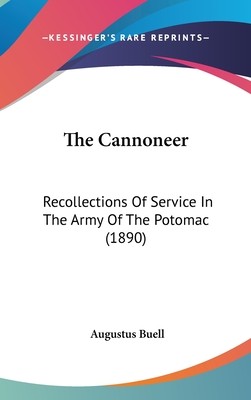
- We will send in 10–14 business days.
- Author: Augustus Buell
- Publisher: Kessinger Publishing
- ISBN-10: 0548964254
- ISBN-13: 9780548964255
- Format: 15.2 x 22.9 x 2.7 cm, hardcover
- Language: English
Reviews
Description
Detailing the major battles of the American Civil War, Augustus Buell’s The Cannoneer is a vital window into the lives of the period’s soldiers. The book describes in vivid detail the horrors of the war, from the emotions of the troops down to the minutiae of their weapons’ makeup.
Buell himself was a detached volunteer in the Regular artillery, and the book begins with a report of his time in service as well as a brief history behind the formation of the company.
When the artillery was short of Regulars, they enlisted detached volunteers like Buell to make up numbers. These volunteers were often young men who had worked in farms, sawmills and workshops prior to volunteering. All were accustomed to hard work and regimented lifestyles, but nothing could prepare them for the brutal battles of the Civil War.
The Cornfield Battle and the role played by the First Corps is explained in great depth, as is the organisational particulars of the famed Battle of Gettysburg. Alongside this technical detail are horrific descriptions of the scenes the soldiers were faced with which combine to give the reader a better sense of what these men experienced.
Rather than a detached overview of the battles and their outcomes, this first-person account from Buell serves an important and personal role in the historiography of the monumental Civil War period.
- Author: Augustus Buell
- Publisher: Kessinger Publishing
- ISBN-10: 0548964254
- ISBN-13: 9780548964255
- Format: 15.2 x 22.9 x 2.7 cm, hardcover
- Language: English English
Detailing the major battles of the American Civil War, Augustus Buell’s The Cannoneer is a vital window into the lives of the period’s soldiers. The book describes in vivid detail the horrors of the war, from the emotions of the troops down to the minutiae of their weapons’ makeup.
Buell himself was a detached volunteer in the Regular artillery, and the book begins with a report of his time in service as well as a brief history behind the formation of the company.
When the artillery was short of Regulars, they enlisted detached volunteers like Buell to make up numbers. These volunteers were often young men who had worked in farms, sawmills and workshops prior to volunteering. All were accustomed to hard work and regimented lifestyles, but nothing could prepare them for the brutal battles of the Civil War.
The Cornfield Battle and the role played by the First Corps is explained in great depth, as is the organisational particulars of the famed Battle of Gettysburg. Alongside this technical detail are horrific descriptions of the scenes the soldiers were faced with which combine to give the reader a better sense of what these men experienced.
Rather than a detached overview of the battles and their outcomes, this first-person account from Buell serves an important and personal role in the historiography of the monumental Civil War period.


Reviews